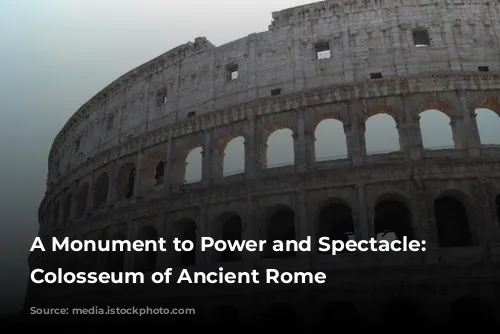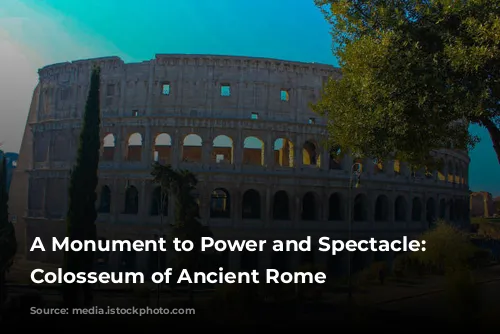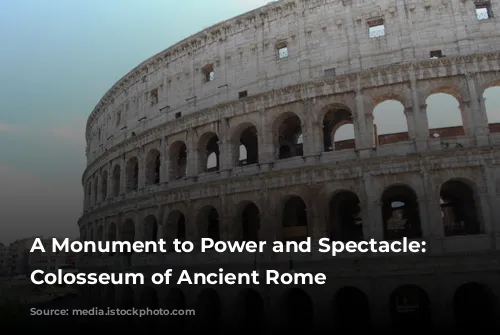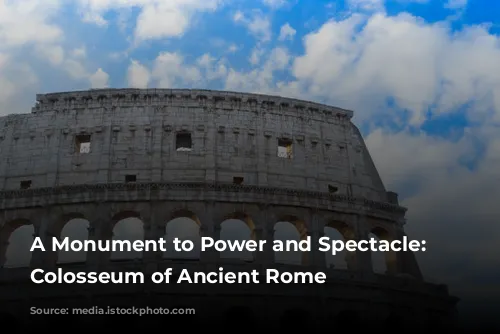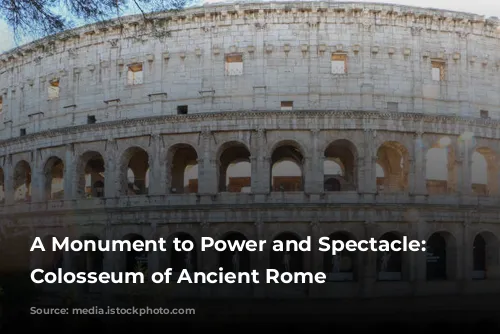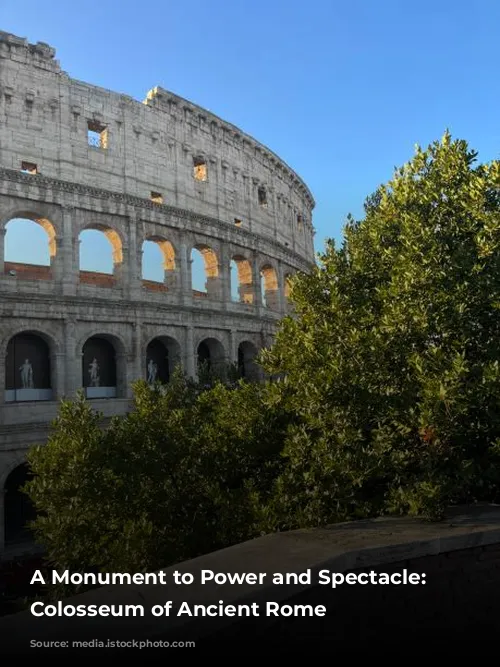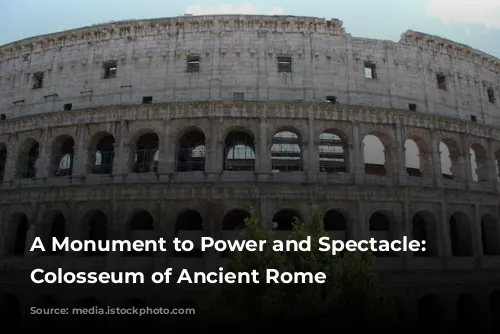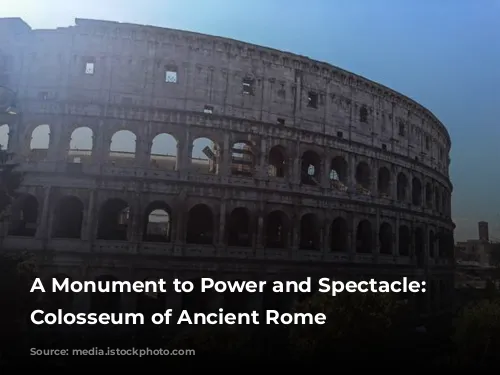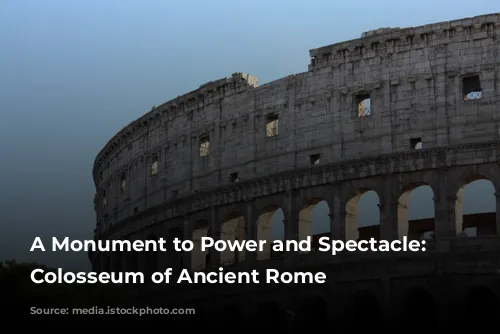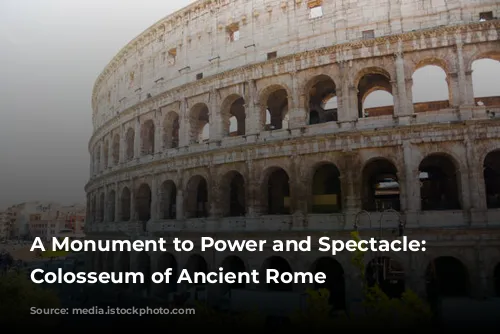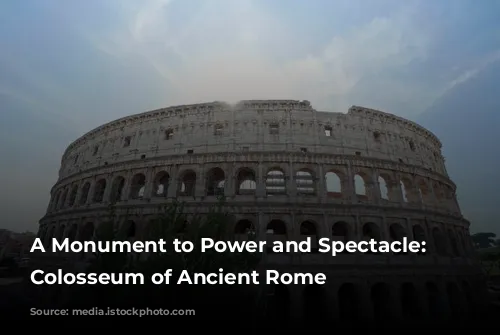The Colosseum, a monumental structure in the heart of Rome, is a testament to the power and grandeur of the Roman Empire. Built from the spoils of Judea, this massive amphitheater stands as a symbol of Roman might. This iconic landmark, the largest permanent amphitheater in the ancient world, was built after the earlier use of temporary wooden structures. Its unique design allowed for a vast audience, with seating arrangements reflecting the social hierarchy of Roman society.
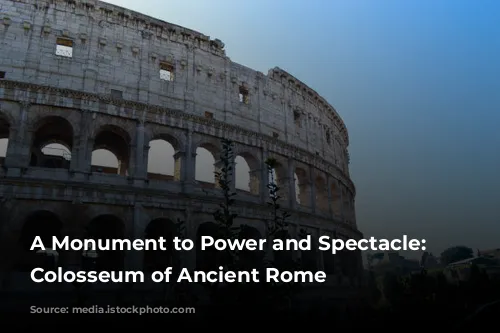
A Seat for Every Social Class
The Colosseum’s exterior architecture is just as impressive as its interior design. The four levels of the Colosseum, each with 80 arches, create a sense of monumentality and awe. These arches not only enhance the visual appeal of the building but also serve a practical purpose, enabling the construction of such a colossal structure.
Inside, the Colosseum’s seating arrangement was carefully planned, reflecting the social order of Roman society. The most elite spectators were seated closest to the arena, while the lower classes occupied the higher sections. This segregation was strictly enforced, with corridors designed to prevent mixing between different social groups. This system ensured that Senators and Equestrians would not interact with the plebs, highlighting the rigid social hierarchy of Roman society.
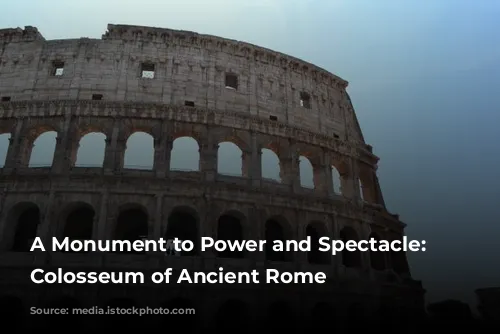
Engineering Marvels: From Awnings to Underground Chambers
The Colosseum’s remarkable architecture extended beyond its seating arrangements. The vela, massive canvas awnings, provided shade for spectators during the scorching Roman sun. These awnings, requiring the labor of hundreds of Roman sailors, are a testament to the Romans’ engineering prowess.
Beneath the arena floor lay the hypogeum, a complex network of chambers and tunnels. This underground labyrinth served as a storage area for scenery and props, as well as a staging ground for dramatic entrances. Through trapdoors and lift systems, gladiators and animals made spectacular appearances, adding to the excitement and spectacle of the games. While some believe the hypogeum was simpler in its original design, others believe it was elaborated later, with intricate tunnels and chambers added under the reign of the Emperor Domitian.
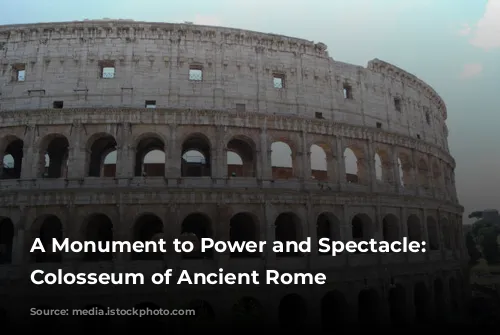
A Symbol of Power and Entertainment
The Colosseum, a symbol of Roman power and entertainment, hosted a variety of blood sports including animal hunts, gladiatorial combat, and prisoner executions. This arena provided a spectacle that captivated the Roman masses, offering a thrill and excitement that was unparalleled in its time. The Colosseum’s legacy continues to inspire awe and wonder in viewers today, reminding us of the grandeur and spectacle of the Roman world.
